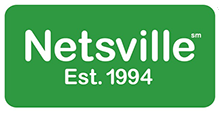Note: please check out Cybersphere: A Virtual Journey Through the Apocalypse and Object-Oriented Programming to read the first part of this series.
Having established Cybersphere as an interactive, virtual reality cyberpunk novel, Jonathan Baird and the rest of the Virtual Visions team (whose members included Baird, Mel Stanley, Dan Buford, Ron Straight, and Micah Brandon, Netsville’s current VP of Systems) began to explore ways to develop it further. “We were all in college and [Cybersphere] became our platform for daily communication. We were all friends that lived hours apart from one another but we spent hours together everyday in a virtual reality.” Through Cybersphere and online bulletin boards, the team regularly chatted with many of the early prominent figures of the Internet age and were inspired to look towards a bigger picture. “We followed Tim Berners-Lee’s lead before anyone knew who he was. We followed Marc Andreessen before Netscape was created. We knew Marc as a fellow college student. We were all on the precursors of the world wide web which were things like Gopher, Veronica, and FTP (file transfer) which is still something that we use today.”
As such, the original five members began to devise a bold new plan that they hoped would progress bulletin board systems by applying some of the concepts of Cybersphere in a radical new way. Bulletin boards systems (or BBS) were popular at the time commercially (as the Internet was not yet available to the general public), allowing users to connect to computer servers via dial-up modems to post simple messages, exchange email, upload and download files, and chat, usually in association with a particular subject or interest. “We had this BBS experience and we had this Internet experience,” Baird explains. “We wanted to take BBS’s to a level where they were like virtual realities and we wanted to tie multiple geographic areas and communities together like the Internet (because back then the Internet was for military and education and the only reason we were on it was because we were in education). Instead of being a regular BBS, it would be a virtual reality…and not just message boards, chat, and file downloads. [It would be a place where] you could still email and chat but it was within a premise of a virtual reality like you were stepping into the matrix. When you’re in the matrix, you’re walking, driving, working, eating, you’re doing normal things. You’re receiving email but an email might be in the form of an actual letter that somebody typed. It’s not physically real because you’re in the matrix.”
Having created early websites for Virtual Visions and Cybersphere, the team slowly began to outline how to turn their plan into an applicable business yet despite making some headway, what they didn’t expect was that the online landscape was soon destined to change forever. “In December of 1994, they passed a law that allowed for the commercialization of the Internet and it instantaneously led to the creation of the ISP business which was allowing people to use their dial up modems (which they had been using originally to connect to BBS’s) to dial up and get access to the Internet to visit websites which were in their infancy. Our original business idea was crushed but now people wanted websites and we knew how to do that and had experience doing it. There was now this national dialogue about this new thing called the Internet and everyone that knew us…all came rushing to ask us to explain it to them. So we ended up starting a web design business [Netsville] and Cybersphere got put on the back burner at that point.”
With a change in direction and a new name, the team at Netsville would go on to create many of the world’s first websites, pioneer eCommerce solutions, and innovate Internet Property Management techniques to enrich online website properties; however, as the team evolved and the Internet grew to the powerhouse that it is today, they never lost sight of their auspicious beginnings with Cybersphere, keeping the online virtual reality game alive and running. Despite being quite antiquated in comparison to today’s leaps in online gaming communities, the game has maintained a loyal following and is still currently being played actively. Baird admits, “We kept Cybersphere going here at Netsville by basically not wanting to kill it. We’ve always expanded the hardware it’s run on. After [two decades], its original hardware couldn’t run it today because of the size that it has grown to. We have kept it going through the years and encouraged people to develop and expand it. It’s still active in the sense that hundreds of people use it but it never expanded into thousands of active users.” Pausing for a moment to reflect on roads not taken, Baird states, “Looking back, I think it would have been interesting if we would have kept that original business model and focused more on our efforts with Cybersphere but we were young and just starting business. We certainly chased the money and if we were getting hired to do something, that’s what we would do.”
To find out more about Cybersphere or play the game itself, please visit cybersphere.net and see if you have what it takes to survive the post-apocalyptic city of New Carthage.
Based in Rochester, New York, Netsville is an Internet Property Management company specializing in managing the Digital Marketing, Technical, and Business Solutions for our customers since 1994. For more information, please click here.






